By Rita Brhel, managing editor and API Leader
 Susie Walton used to yell at her kids – a lot.
Susie Walton used to yell at her kids – a lot.
“The older they got, the more I yelled,” recalled Walton, an International Network for Children and Families (INCAF) parent educator and author of Key to Personal Freedom who busted a few of the powerful myths outlined in her book during an INCAF teleseminar last week.
When her four boys – all within five years – were younger, yelling was a somewhat effective discipline, she admits. But that changed when they hit their teen years. Yelling no longer worked at all, and Walton was forced to find another way to interact with her children. She turned to positive discipline. As she acquired new skills and a new philosophy of parenting her children, one truth stood out among the others: that 95% of what children learn comes from what their parents model.
What was Walton teaching her sons by yelling? To solve problems, especially interpersonal conflicts, through exerting control over others.
Myth Busted: Validation Works Better Than Yelling
What Walton learned is that the strongest tool parents can use during a moment of conflict with their children is validation. Children, like adults, want to be heard and understood, even if the answer is still “no.”
For example, say a girl asks her father if she can turn on the television and he believes she has watched enough TV for the day. So, she begins to have a tantrum. What does Dad do? What is not helpful is saying, “No, you can’t.” While the girl certainly wants the TV on, the way to resolve the situation is not to engage her in a power struggle over the on/off button. An example of an appropriate validation here is, “I know you want to watch the TV, but you’ve already watched two hours worth today and that is enough.”
Just as with yelling, the certainty of mainstream culture that spanking and other fear-based forms of punishment are effective at disciplining children is a myth. Parents don’t need to use punishments to get the behavior they seek in their children. The first challenge is for parents to realize this truth; the second, and harder, challenge is for the parents to adopt new ways of disciplining their children. Walton suggested parents first place limits on their behavior, making it a rule that they will not use threats, bribes, or other fear-based discipline tools on their children. With this rule in place, parents can then begin using the positive, teaching- and guidance-based discipline tools they can learn through books such as Attached at the Heart by Attachment Parenting International Co-founders Barbara Nicholson and Lysa Parker, local API Support Group meetings, and other API resources.
It’s important, though, for parents to realize that it does take longer for children to learn a concept through positive discipline than through punishments, Walton said. However, once that child learns the concept, he is truly competent in it. Whereas, with punishments, a child behaves out of fear and does not learn the concept for the long term.
For example, a listener at the teleseminar described how her three-year-old son pushes and hits his 15-month-old sister. The mother is having a difficult time dealing with this sibling rivalry without resorting to spankings. Walton suggested she instead try validating her son’s feelings, acknowledging that his acting-out behavior is actually a cry for attention. To do so, Walton suggested the mother to give additional one-on-one attention to her son when he is not acting out, and when he does, to explain to him that it’s not OK to hit his sister and, if she wants more attention, all he needs to do is ask Mommy.
Myth Busted: Mistakes are Opportunities to Strengthen Connection with Our Children
No parent is perfect. We all make mistakes in relating to and interacting with our children. The key is learning to forgive ourselves but also learn from our mistakes – important not only for ourselves but for our children to learn. Walton explained how helpful it is for parents to look upon their children’s undesirable behavior not as something to be feared or ashamed of, but instead as opportunities for learning.
For example, a listener at the teleseminar described how her three-year-old daughter makes grocery shopping difficult because she grabs items off the shelf. She tells her daughter over and over not to touch things on the shelf. Walton suggested that the mother set up a mock grocery store at home and role play the behaviors she wishes to see first at home before going out to the store. Then, before going into the store, the mother would explain to her daughter that she isn’t to touch anything without Mom saying OK, just like when they play at home. Finally, when her daughter starts knocking items off the shelf, the mother should continue to focus on teaching her daughter to clean up and put the items back.
“Teach, teach, teach,” Walton said. “And when she does make a mistake, say ‘I love you, and we’re going to be OK,’ and help her clean up.”
Myth Busted: No One Knows Your Child Better Than You
One of Walton’s favorite parenting tools is to allow children to be children. She recalls a neighbor telling her, when her boys were young, that she needed to exert more control over them. She opted not to take this advice, because she enjoyed her time with her sons. She thought it was fun to let them be who they were, instead of trying to force them into certain behaviors to please those outside her family.
Walton said new parents are barraged constantly with advice from their family, friends, pediatrician, neighbors, and even strangers. But, no matter what others may claim, the real parenting expert for your child and in your family is you. And parents do best to only embrace the parenting tools and philosophies that they find are best for their individual family. For example, parents who cosleep with their children shouldn’t do it because a book said to and shouldn’t stop doing it because they saw a television ad that said so. Each family should be cosleeping or not because that is what they have found works best for their family.
In another example, it is Walton’s belief that parents cannot love their child too much. Others criticize this parenting approach, saying that they will spoil their children. Walton said they can spoil their children by teaching them that love equals material possessions, rather than being derived from emotionally healthy relationships. This parenting approach works for Walton, and no one’s criticism, or approval, weighs as much as on the decision to continue a nurturing parenting approach as what Walton sees working for her children.
Myth Busted: You Can Be Friends with Your Children
Many parents don’t like the thought of being friends with their children, because they connect that idea with an image of overly permissiveness. We know that children need discipline. They need boundaries.
Children also need parents who care and who are willing to listen when they talk about the joys and challenges of their day. The myth that parents can’t be friends with their kids stems from the image of a parent buying alcoholic beverages for their underage teens and perhaps even partying with them. What Walton is meaning is that parents need to give of their time to be with their children and, as was the theme of the 2008 Attachment Parenting Month, to give presence instead of presents.
Being friends with your children doesn’t mean that parents give up striving for personal and family life or not setting and maintaining boundaries and limits for their children’s behaviors, as outlined by the Attachment Parenting International’s Eight Principles of Parenting. Parents still need to maintain their self-respect by keeping their parenting approach family-centered rather than child-centered, and parents must remember that discipline is a vital parenting tool.
For example, Walton said her sons used to tell dirty jokes around her, so she talked to them about her concerns. Walton didn’t let her children do all that they wanted, as it was affecting her sense of balance. Motherhood martyrdom eventually breeds resentment.
The Price Families Pay for Myths
Too many families are stuck living according to these and other myths about parenting and child behavior. They’re trapped by their expectations that children should “act their age” and fears of spoiling their children, Walton said. They cannot truly enjoy parenthood and family life.
“What it can cost is that freedom to create the family we aspire to,” Walton said. And it can cost the child’s development of creativity, emotional regulation and ability to healthily attach to others, and other life skills. Walton calls on parents to bust the myths that constrict their family life – to break free of the bonds of fear and expectations, so that they can experience fulfillment in their parenting roles and reap the rewards of a close, connected family: “When we let go of these myths, it creates so much freedom.”
What myths have you busted in your family life?
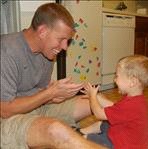 Target Age: Early 2 year old
Target Age: Early 2 year old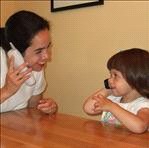 Target Age: Middle 2 year old
Target Age: Middle 2 year old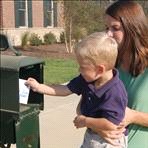 Target Age: Late 2 year old
Target Age: Late 2 year old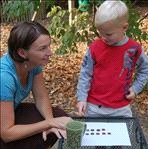 Target Age: Late 3 year old
Target Age: Late 3 year old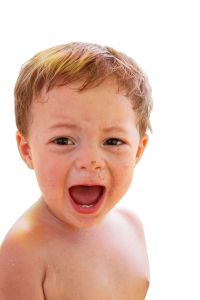 With toddlerhood comes tantrums. While some parents are taken by surprise by the seemingly violent appearance of a child raised in a non-violent home, it is a perfectly natural rite of passage for any child. The reasons behind it are simple: lots of emotions with little logic. The emotions that can overtake a toddler can be a floodgate of overwhelming proportions.
With toddlerhood comes tantrums. While some parents are taken by surprise by the seemingly violent appearance of a child raised in a non-violent home, it is a perfectly natural rite of passage for any child. The reasons behind it are simple: lots of emotions with little logic. The emotions that can overtake a toddler can be a floodgate of overwhelming proportions.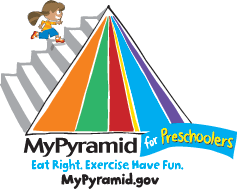 Five years ago, I had very firm ideas about childhood nutrition. “Balanced meals” was my mantra. I presented plates with foods of different colors (indicating different nutrients), and I sought out whole foods, natural foods, and organic foods. My firstborn stuck up his nose at much of it. Even the foods children are “supposed” to love – macaroni and cheese, pizza, and hot dogs – earned his disdain.
Five years ago, I had very firm ideas about childhood nutrition. “Balanced meals” was my mantra. I presented plates with foods of different colors (indicating different nutrients), and I sought out whole foods, natural foods, and organic foods. My firstborn stuck up his nose at much of it. Even the foods children are “supposed” to love – macaroni and cheese, pizza, and hot dogs – earned his disdain.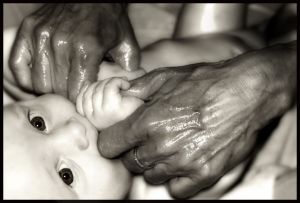 In today’s world economy, we often find that most parents are working outside of the home. This may mean a two parent home has both parents working outside of the home to keep their bills paid and food on the table. This may also mean that we see a reversal of roles, as compared to our 1950s ideals of families, where a father may stay at home with the children while the mother works outside of the home. Or the traditional stay-at-home mother while the father is working.
In today’s world economy, we often find that most parents are working outside of the home. This may mean a two parent home has both parents working outside of the home to keep their bills paid and food on the table. This may also mean that we see a reversal of roles, as compared to our 1950s ideals of families, where a father may stay at home with the children while the mother works outside of the home. Or the traditional stay-at-home mother while the father is working. “Today at our play group my son bit my friend’s daughter! My friend acted like it was a normal childhood problem, and told me not to worry about it, but I’m horrified! Why did my son do this? How can I prevent it from happening again?”
“Today at our play group my son bit my friend’s daughter! My friend acted like it was a normal childhood problem, and told me not to worry about it, but I’m horrified! Why did my son do this? How can I prevent it from happening again?” Neighbor: “Oh, your children are always so wonderful to be around! I can tell that you take parenting seriously.”
Neighbor: “Oh, your children are always so wonderful to be around! I can tell that you take parenting seriously.” Depression is beyond epidemic proportions, not only in the United States but in many societies around the world. People like to blame more recent economic downturns, but these high rates of depression have been an ongoing concern for many years from before the stock markets took a dive.
Depression is beyond epidemic proportions, not only in the United States but in many societies around the world. People like to blame more recent economic downturns, but these high rates of depression have been an ongoing concern for many years from before the stock markets took a dive.
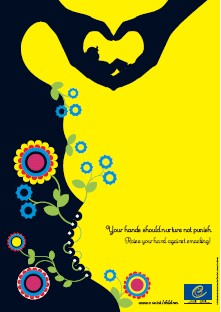 The Council of Europe wants a continent free of corporal punishment. Hitting people is wrong — and children are people, too.
The Council of Europe wants a continent free of corporal punishment. Hitting people is wrong — and children are people, too.